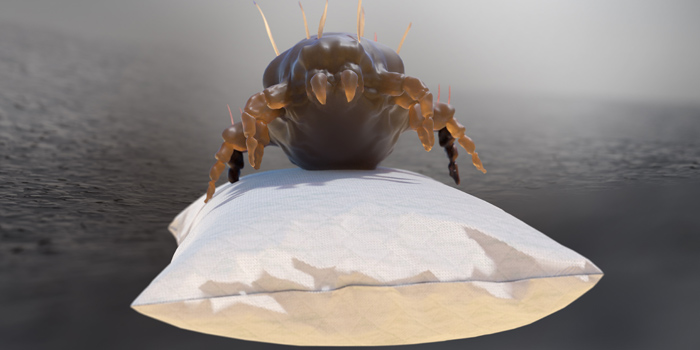As hard as you work to keep your senior healthy, there are some surprising ways to do just the opposite. Several common household items that can breed bacteria, viruses and allergens in the home need your further consideration.
Pillows.
You can’t see them, but dust mites are the most common cause of non-seasonal allergies and asthma. Flakes of human skin accumulate deep within pillows. Dust mites feed on that material. The best way to reduce the buildup of dust and dust mites is to wash pillowcases at least every few weeks. Obtain zippered, allergen-proof covers for each pillow. And, wash the pillow every few months. Use the warm cycle in the washing machine to get rid of dust mites and debris in pillows that do not have feather down contents. Replace any deeply soiled pillows routinely.
TV Remotes.
Both those who live in the house and guests have the opportunity to touch the TV remote. It gets coughed and sneezed on, could have food spilled on it, could get dropped on the floor – yet it is rarely part of the cleaning routine. Wiping it down with a cloth or cotton ball dipped in rubbing alcohol will do the trick. A Q-tip will do the same things to clean between the buttons. This works for telephones, too.
Doorknobs.
Doorknobs and other hard surfaces can harbor viruses and bacteria for hours. You can reduce contact with doorknobs by leaving doors open or taping the latches when such is practical. Otherwise, a thorough wiping down of doorknobs with a cleaning solution specifically labeled to kill strep and staph bacteria and cold and flu viruses should do the trick. Be sure to follow the instructions to assure it effectively sanitizes. Of course, a consistent hand-washing regimen will reduce the spread of germs, as well.
Sponges.
Wet sponges are an ideal breeding ground for bacteria. Sponges which are designed to help us clean, actually are among the dirtiest objects in the home. When you wash dishes or wipe down the kitchen counter with a sponge, E. coli and salmonella can be spread all over the surfaces you are intending to clean. E. coli and salmonella can result in food-borne illnesses.
Using dishcloths that are regularly laundered or paper towels with a mix of bleach and water will work much better. Still love your sponge? To keep it from becoming bacteria-laden, squeeze the water out of it between uses. Then sanitize it regularly by saturating the sponge and microwaving it for one minute, placing it in the dishwasher, or dunking it in a 1:9 ratio of bleach to water. When the sponge has adopted any odor, throw it away.
Vacuums.
Vacuuming is hyped as an effective way to reduce the level of airborne allergens in the home. Vacuum filters, however, do not always effectively contain dust mites, pollen, pet dander and other allergens. These irritants are thrown back into the air and can continue to cause discomfort for the home’s inhabitants. Best to look for a vacuum that has a HEPA (high-efficiency particulate air) or S-class filter. These extra-fine filters can trap up to 99.9% of super fine particles, effectively reducing the pollutants in your home.
It is impossible to keep your home completely free of allergens, bacteria, and viruses, but a few simple changes around the house can make a significant difference.



